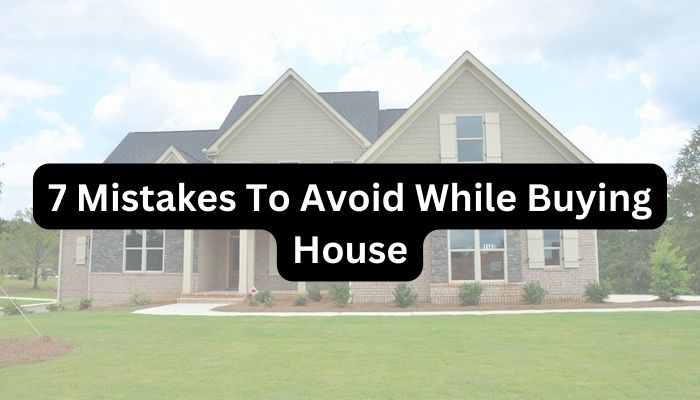7 Mistakes To Avoid While Buying House – Whether financial or lifestyle-cramping, you’ll live with the repercussions of a buying mistake for years — maybe even decades.
7 Mistakes To Avoid While Buying House:
If you know what to expect — and how to avoid common home buying mistakes — you can give yourself the best possible shot at scoring the home you want. Here’s what to do.
When you’re preparing to get a mortgage and buy a new home, it’s important to clean up your personal finances and present yourself as a strong borrowing candidate.
Common mistakes for first-time homebuyers:
1. Skipping the financial prep:
As exciting as it is to buy a new home, you don’t want to dive in before you’re financially ready — or have enough cash in the bank.
Closing costs average around 2% to 5% of the loan amount and typically need to be paid up front. You will also need funds saved for other costs of homeownership — like maintenance and eventual repairs, too. For this, State Farm says you can expect to spend at least 1% to 4% of your home’s value annually (so between $4,500 and $18,000 on a median-priced house). Think of it like an emergency fund for your home.
Prepping your credit is another important financial step before buying a house. Lenders will consider both your credit score and credit report — which shows your debt and payment history — when evaluating your eligibility for a loan. Your credit score will also directly impact the interest rate you get on that loan and, subsequently, your monthly mortgage payment.
2. Don’t go with the first mortgage lender you talk to:
You may be encouraged to choose a preferred lender by your real estate agent, friend or family member. However, LendingTree studies consistently show that homebuyers who compare rates with several mortgage companies save big at the closing table and over the life of their loan.
3. Applying for the wrong loan program:
Although first-time buyers often choose conventional loans to buy homes, the approval requirements are more strict than those of government-backed loan options. You’re setting yourself up for disappointment and potential loan denial if your credit and income don’t meet the minimum standards for the mortgage you apply for.
4. Don’t assume you need 20% down:
Many first-time buyers assume they need a 20 percent down payment to buy a house. But while having 20 percent down comes with perks — like avoiding private mortgage insurance (PMI) — it’s not always the best option.
Waiting until you have 20 percent down can push your home buying timeline out by years. And the longer you wait to buy, the higher home prices you’ll be chasing — which likely means you’ll need an even bigger down payment.
Luckily, there are several loan programs available today that require little to no down payment. These include:
A 0% down VA loan (available to qualified military/veteran borrowers)
A 0% down USDA loan (available in select rural and suburban areas)
A 3.5% down FHA loan
A 5-10% down conventional mortgage
5. Miscalculating repair and renovation costs:
First-time home buyers are frequently surprised by high repair and renovation costs. Buyers can make two mistakes: First, they get a repair estimate from just one contractor, and the estimate is unrealistically low. Second, their perspective is distorted by reality TV shows that make renovations look faster, cheaper and easier than they are in the real world.
6. Skipping a home inspection:
First-time homebuyers often confuse home inspections with home appraisals, but they’re two very different things. The purpose of a home appraisal is to tell the lender the home is in good condition and that it’s worth what you’re paying for it, based on similar home sales nearby. A home inspection, on the other hand, provides you with an in-depth report detailing all of the working parts of the home.
7. Ignoring VA, USDA and FHA loan programs:
A lot of first-time home buyers want to or need to make small down payments. But they don’t always know the details of government programs that make it easy to buy a home with zero or little down.
How to avoid this mistake: Learn about the following loan programs:
VA loans are mortgages guaranteed by the U.S. Department of Veterans Affairs. They’re for people who have served in the military. VA loans’ claim to fame is that they allow qualified home buyers to put zero percent down and get 100% financing. Borrowers pay a funding fee in lieu of mortgage insurance.
USDA loans can be used to buy homes in areas that are designated rural by the U.S. Department of Agriculture. Qualified borrowers can put zero percent down and get 100% financing. You pay a guarantee fee and an annual fee in lieu of mortgage insurance.
FHA loans allow for down payments as small as 3.5%. What’s more, the Federal Housing Administration can be forgiving of imperfect credit. When you get an FHA loan, you pay mortgage insurance for the life of the mortgage, even after you have more than 20% equity.

